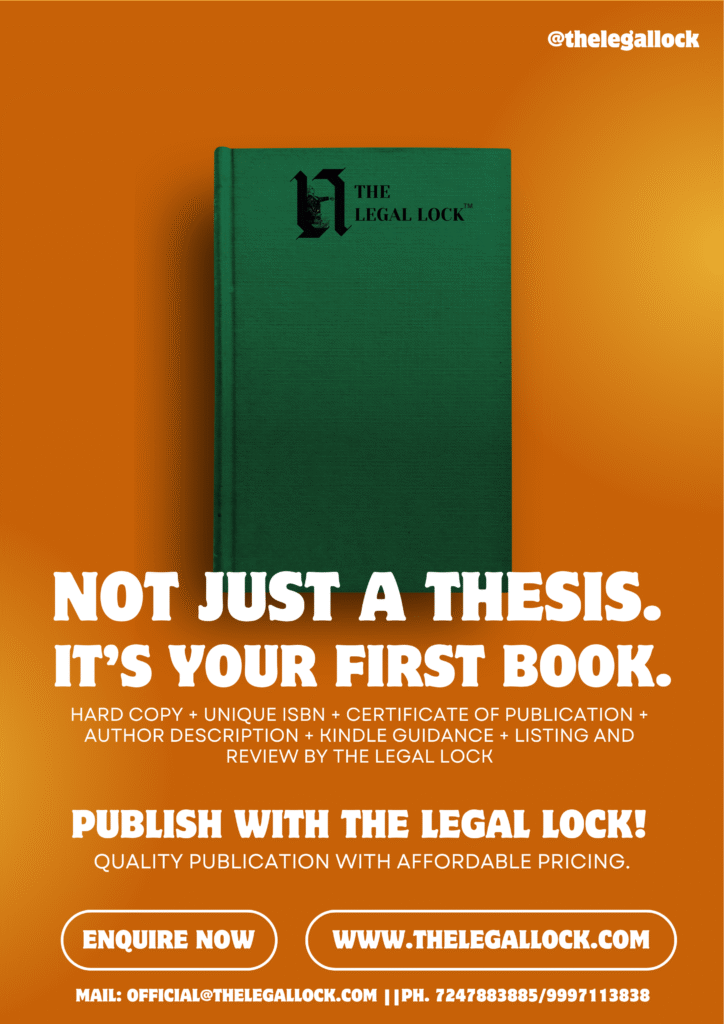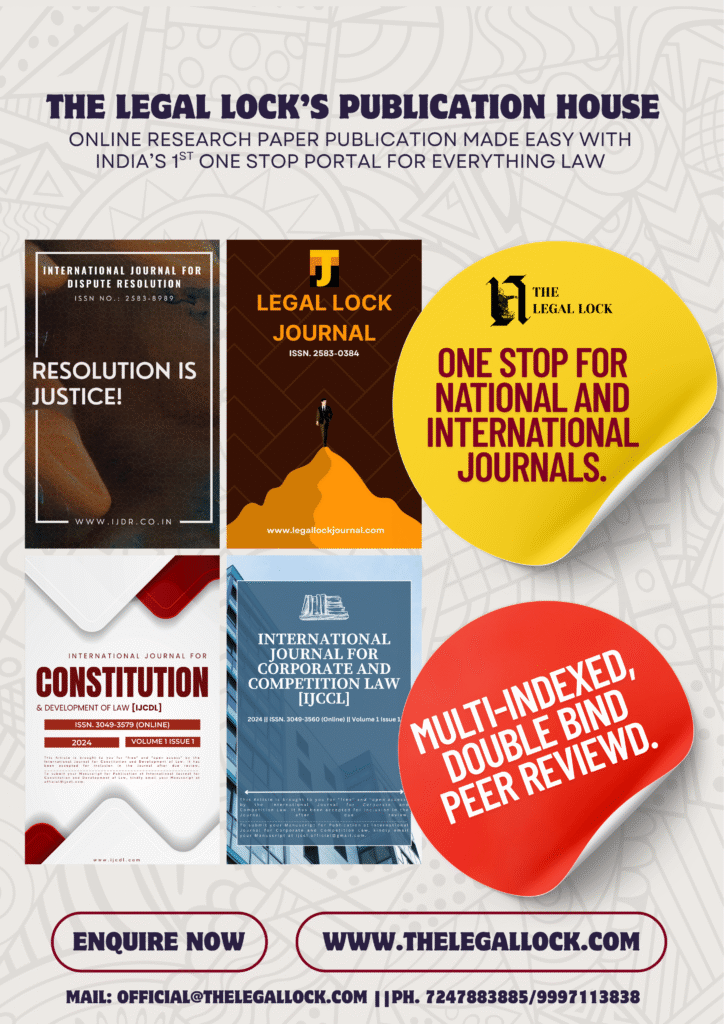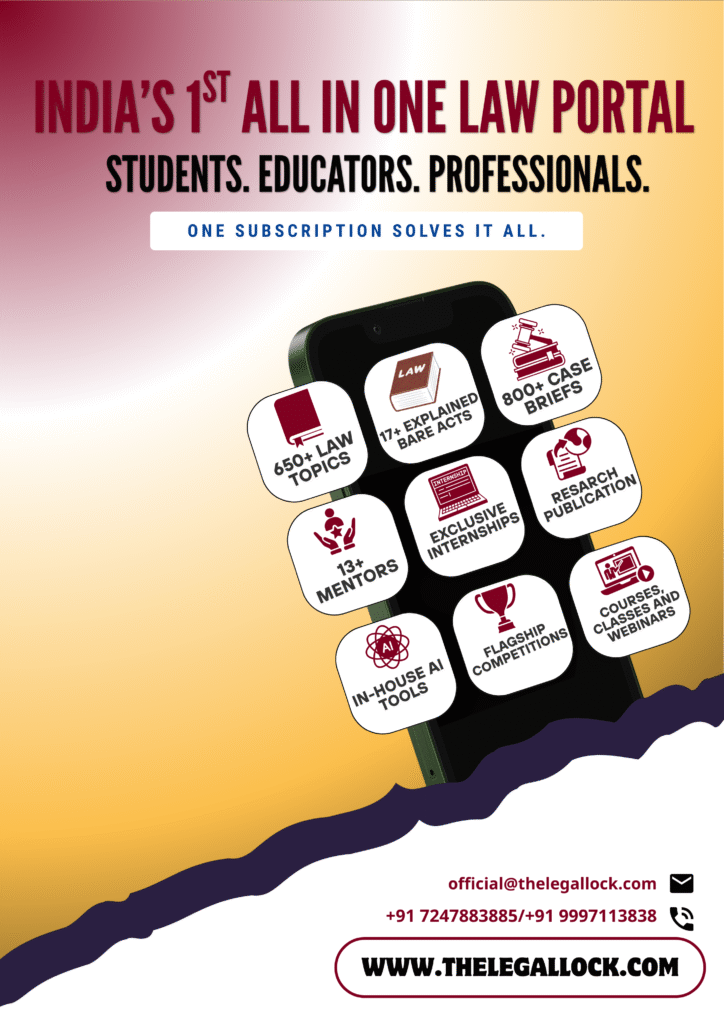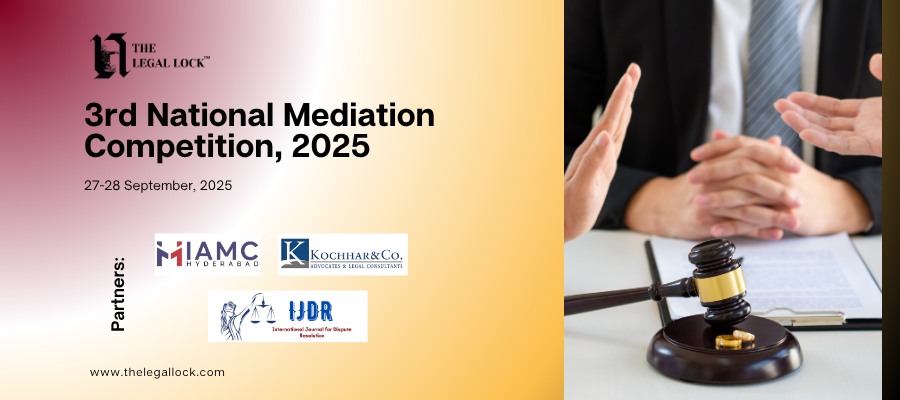INTRODUCTION
The Supreme Court is the Guardian of the Constitution. The essence of a federal Constitution is division of powers between the Central and State governments. The division is made by a written Constitution which is the Supreme Law of the land. Disputes might arise between the Centre and the constituent units. In order to maintain the supremacy of the Constitution, there must be an
independent and impartial judiciary to decide disputes between the Centre and the State or the States inter se.
The Supreme Court under our Constitution is the final interpreter and guardian of the Constitution. The Supreme Court is also the guardian of the Fundamental Rights of the people. The Supreme Court has been called upon to safeguard civil and minority rights and play the role of ‘guardian of the social revolution’. It is the highest and final interpreter of the general law of the country as it is the highest court of appeal in civil and criminal matters.
APPOINTMENT OF JUDGES
The Judges of the Supreme Court are appointed by the President. The Chief Justice of the Supreme Court is appointed by the President with the consultation of such of judges of the Supreme Court and the High Court, as he deems necessary for the purpose. But in appointing other judges, the President shall always consult the Chief Justice of India.
Under Article 124(2), the President in appointing other judges of the Supreme Court is bound to consult the Chief Justice of India. But in appointing the Chief Justice of India, he is not bound to consult anyone. The word ‘may’ used in Article 124 makes it clear that it is not mandatory on him to consult anyone.
Till the year 1973, the practice was to appoint the senior-most Judge of the Supreme Court as the Chief Justice of India. This practice has been virtually transformed into a convention and was followed by the executive without any exception.
This 22 year old practice was broken within a few hours of the delivery of the judgment in the Kesavananda Bharti and Others v. State of Kerala in 1973 when Mr. A. N. Ray was appointed as the Chief Justice of India superceding three senior colleagues, Justices Shelat, Hegde and Greer.
The first reason given by the government was that under Article 124 the President has absolute discretion to appoint any one whom he finds suitable for the post of the Chief Justice of India. Secondly, the government contended that it followed the recommendations of the Law Commission in appointing the Chief Justice and superceding the three senior Judges.
In S. P. Gupta v. President of India, Bhagwati J. has suggested for the appointment of a judicial committee for the judicial appointments. The existing constitutional provisions are not adequate.
The Janta Party which came to power in 1977 was opposed to the policy of supersession of the Judges of the Supreme Court. Consequently they again revised the old practice of appointing the Chief Justice of the Supreme Court on the basis of seniority. It is submitted that the rule of seniority, though a mechanical rule, is beyond controversy and will ensure independence of Judiciary.
Though according to the language of Article 124, the President is required to “consult” legal experts but prior to the decision of the Supreme Court in Supreme Court Advocate on Record Association v. Union of India (1993 SC), it has always been interpreted that the President was not bound to act in accordance with such consultation. The meaning of the word ‘consultation’ came for the consideration of the Supreme Court in the Union of India v. Sankalchand Himatlal Sheth (1977), which was related to the scope of Article 222 of the Constitution. It was held that the word ‘consultation’ meant full and effective consultation. For a full and effective consultation it is necessary that the three constitutional functionaries must have for its consideration full and identical facts on the basis of which they would be able to make a decision. The President as a right to differ from them and take a contrary view.
Consultation does not mean concurrence and the President is not bound by it. In S. P. Gupta v. Union of India (1982), popularly known as the Judges Transfer Case, The Supreme Court unanimously agreed with the meaning of the term ‘consultation’ as explained by the majority in Union of India v. Sankalchand Himatlal Sheth (1977).
The meaning of the word consultation in Article 124(2) is the same as the meaning of the word ‘consultation’ in Article 212 and Article 222 of the Constitution. The only ground on which the decision of the Government can be challenged is that it is based on mala fide and irrelevant considerations; that is, when constitutional functionaries expressed an opinion against the appointment.
The Supreme Court has abdicated its power by ruling that the constitutional functionaries had merely a consultative role and that power of appointment of Judges is “merely and exclusively vested in the Central government.
▪ Supreme Court Advocate on Record Association v. Union of India (1993 SC)
The Supreme Court in a historic judgment by a 7-2 majority has overruled the S. P. Gupta v. Union of India (1982) and held that in the matter of appointment of the Judges of the Supreme Court and the High Courts, the President is bound to act in accordance with the opinion of the Chief Justice of India who would tender his opinion on the matter after consulting his colleagues. The appointment of the Chief Justice of India shall be based on seniority. The Court has laid down detailed guidelines governing the appointment and transfers of Judges and held that the greatest significance should be attached to the view of the Chief Justice of India formed after taking into account the views of some of his colleagues. The Court said that the opinion of the Chief Justice of India should have the greatest might in the selection of candidates. Thus the executive element in the appointment process has been reduced to minimum and political influence is eliminated. It is for this reason that the word consultation’ instead of ‘concurrence’ was used in the Constitution and that was done merely to indicate that absolute discretion was not given to any one, not even to the Chief Justice of India as an individual, much less to the executive.
APPOINTMENT OF THE CHIEF JUSTICE OF INDIA
The majority held that the appointment to office of the Chief Justice of India should be made on the basis of seniority, that is, the senior-most Judge considered suitable to hold the office be appointed as the Chief Justice of India.
The important guidelines laid by the Court are the following:
1) Individual initiation of high constitutional functionaries in the matter of Judges appointment are reduced to a minimum. It gives primacy to the Chief Justice of India but puts a rider that he must consult his two colleagues.
2) Constitutional functionaries must act collectively in judicial appointments. 3) Chief Justice of India has the final say in the transfer of Chief Justices and Judges of High Courts.
4) Transfer of Chief Justices and Judges of High Courts cannot be challenged in Courts. 5) Appointment of Chief Justice of India is to be done by seniority.
6) No Judge can be appointed by the Union Government without consulting the Chief Justice of India.
7) Fixation of the strength in High Courts is Justiciable.
8) Supreme Court decision in S. P. Gupta v. Union of India was overruled. The majority judgment of the Supreme Court on the appointment and transfer of the Judges have undone the serious injustice which was done to the Judiciary in the case of S. P. Gupta v. Union of India and restores to it the rightful place for its freedom and independent functioning.
▪ In Re Presidential reference (AIR 1999 SC) Judges Transfer Case II:
A nine-Judge bench of the Supreme Court has unanimously held that the recommendation made by the Chief Justice of India on the appointment of judges of the Supreme Court and the High Court without following the consultation process are not binding on the Government. The Court also widened the scope of the Chief Justice’s consultation process upholding the government’s stand on consultation process, the Court gave its opinion on the nine questions raised by the President in his reference to the Supreme Court, under Article 143 of the constitution.
The Court held that the consultation process to be adopted by the Chief justice of India requires consultation of Plurality of Judges. The expressions “Consultation with the Chief Justice of India” in Articles 217 (1) and 222 (1) of the Constitution of India requires consultation of with plurality of judges in the formation of opinion of the Chief Justice of India. The sole individual opinion of the Chief Justice of India does not constitute “consultation” within the meaning of the said articles. The majority held that in regard to the appointment of judges to the Supreme Court under Article 124 (2), the Chief Justice of India should consult “a collegium of four seniormost Judges of the Supreme Court” and made it clear that if “two Judges give adverse opinion, the Chief Justice should not send the recommendation to the Government.” The collegium must include the successor Chief Justice of India. The opinion of the collegium must be in writing and the Chief Justice of India should send the recommendation to the President along with his own recommendations. The recommendations of the collegium should be based on a consensus and unless the opinion is in conformity with that of the Chief Justice of India, no recommendation is to be made. In regard to the appointment of Judges of the High Courts, the Court held that the collegium should consist of the Chief Justice of India and any two senior-most Judges of the Supreme Court. In regard to transfer of High Court Judge the Court held that in addition to the collegium of four Judges, the Chief Justice of India is required to consult Chief justices of the two High Court, one from which the Judge is being transferred and the other receiving him.
The Court held that the appointment of the Judges of higher Courts can be challenged only on the ground that the consultation power has not been in conformity with the guidelines laid down in the 1993 judgment and as per opinion given in 1999 decisions i.e., without consulting four senior most Judges of the Apex Court.
QUALIFICATION OF A JUDGE OF THE SUPREME COURT OF INDIA
▪ A person to be qualified for appointment as a Judge of the Supreme Court must be a citizen of India.
▪ has been a Judge of a High Court at least for 5 years;
▪ has been at least an advocate of a High Court for ten years;
▪ is in the opinion of the President, a distinguished jurist.
REMOVAL OF JUDGES – ARTICLE 124 (4) AND ARTICLE 124(5)
A Judge may be removed from his office by an order of the President only on the grounds of proved misbehaviour or incapacity. The order of the President can only be passed after it has been addressed to both House of Parliament in the same session. The address must be supported by a majority of total membership of that House and also by a majority of not less than two thirds of the members of that House present and voting.
In C. Ravi Chandran lyer v. Justice A. M. Bhattacharjee (1995), the Supreme Court has held that only the Chief Justice of India, considered to be the first among the Judges, can be the prime mover for taking action against an erring High Court Judge or Chief Justice whose bad conduct falls short of punishment by impeachment.
The Supreme Court held that the resolution passed by Bar Council and Bar Association against the Chief Justice of Bombay alleging bad conduct and pressurising or coercing him to resign from his office has no constitutional sanction and it would amount to contempt and affect the independence of judiciary which is an essential attribute of rule of law.
Explaining the importance of the independence of judiciary the Court said that in a democracy governed by the rule of law ‘under a written constitution’ judiciary is protector of the Fundamental Rights and poise even seals of justice between the citizens and state or the states under Rule of law
and judicial review are basic features of the Constitution. As its integral constitutional structure, independence of the judiciary is an essential attribute of rule of law. Judicial review is one of the most potent weapon in the armory of law.
JURISDICTION OF THE SUPREME COURT:-
1) COURT OF RECORD:
Article 129 makes the Supreme Court a ‘Court of record’ and confers all the Powers of such a Court including the power to punish for its contempt. A Court of Record is a Court whose records are admitted to be an evidentiary value and they are not to be questioned when they are produced before the Court.
Once a Court is made a Court of Record, its power to punish for contempt necessarily follows from that position. The power to punish for contempt of Court has been expressly conferred on the Supreme Court by our constitution.
‘Civil contempt’ means willful disobedience to any judgment, decree, direction, order, unit, or other process of a Court on willful breach of an undertaking given to a Court. ‘Criminal Contempt’ means the publication, of any matter or doing of any act whatsoever which:-
∙ Scandalizes or tends to scandalize, or tends to cover the authority of any Court or ∙ Prejudices or interferes or tends to interfere with the due course of any judicial proceeding, or
∙ Interferes or tends to interfere with, or obstructs or tends to obstruct, the administration of justice in any other manner.
The following acts or publications will not amount to contempt:
∙ Innocent publications and its distribution.
∙ Fair and accurate repeat of judicial proceedings.
∙ Fair criticism of judicial act.
∙ Complaint made in good faith against Presiding officers of subordinate courts (below High Court).
∙ Publication of fair and accurate report of a judicial proceeding before a Court sitting in camera.
▪ In Mohd. Aslam v. Union of India (1994), the Supreme Court held that the Chief Minister of Uttar Pradesh, Mr. Kalyan Singh was guilty of contempt of Court violating the order of the Court not to allow any permanent structure on the disputed land. The verdict establishes the principle of the rule of law that no authority is above the law.
▪ In Manilal Singh v. Dr. H. Borobabu Singh (1993 SC), the Supreme Court had directed the Union Government to produce before the Court, Manipur Speaker Shri Borobabu who had committed contempt by violating the order of the Court.
The judiciary is the guardian of the rule of law. In a democracy like ours where there is a written constitution the judiciary has special function to perform viz. to see that all individuals and institutions including the executive and the legislature act within the framework of not only the law but also the fundamental law of the land.
2) ORIGINAL JURISDICTION – ARTICLE 131:
The Supreme Court has original jurisdiction in any dispute:
i. Between the Government of India and one or more States, or
ii. Between the Government of India and any State on one side and one or more other States on the other, or
iii. Between two or more States.
▪ In State of Karnataka v. Union of India (1977 SC), the Central Government appointed a commission of enquiry against the Chief Minister of Karnataka on charges of corruption, nepotism, favouritism and misuse of government’s power. The plaintiff State of Karnataka
filed a suit under Article 131 of the Constitution for a declaration that the appointment of a commission of inquiry was illegal and ultra vires. The Government of India objected that since the inquiry was against the Chief Minister and certain other Ministers as individuals and not against the State of Karnataka, the suit under Article 131 was not maintainable.
The Supreme Court by a majority of 4:3 held that plaintiff’s suit was maintainable. The State has sufficient interest to maintain a suit under Article 131 because the action of the Central Government against the State affects the interest of the Ministers who exercise its powers.
The Supreme Court held that the appointment of the Commission of Inquiry against the Chief Minister and other Ministers of the State was valid and did not affect the federal structure as implicit in the basic feature of the Constitution. The Central Government has power under Article 356 to order an inquiry for the purpose of the satisfaction required by Article 356.
▪ In Union of India v. State of Rajasthan (1977 SC), it has been held that a State’s suit against the Union of India for the recovery of damages under Section 80 of Railways Act, 1890 is not a ‘dispute’ falling under Article 131 (a) and therefore not maintainable. The Supreme Court’s jurisdiction under Article 131 is not attracted to such ordinary dispute of commercial nature between the State and the Union of India.
The original jurisdiction of the Supreme Court does not extend to the following matters:
a) The jurisdiction of the Supreme Court shall not extend to a dispute arising out of any treaty, agreement covenant, engagement, sanad, or other similar instrument which was executed before the commencement of the Constitution and continues to be in operation or which provides that the jurisdiction of the Supreme Court shall not extend to such a dispute.
b) Under Article 264, Parliament may by law exclude the jurisdiction of the Supreme Court in disputes with respect to the use, distribution or control of the mater of any inter-state river or river-valley.
c) Matters referred to the Finance Commission.
d) The adjustment of certain expenses between the Union and the State.
Enforcement of Fundamental Rights:
Article 32 confers original jurisdiction on the Supreme Court to enforce fundamental rights. Under Article 32, every citizen has a right to move the Supreme Court by appropriate proceedings for the enforcement of the fundamental rights.
3) APPELLATE JURISDICTION – ARTICLE 132:
The Supreme Court is the highest Court of Appeal in the Country. The appellate jurisdiction of the Supreme Court can be divided into four main categories: i. Constitutional matters
ii. Civil matters
iii. Criminal matters
iv. Special leave to appeal
❖ Appeal in Constitutional Matters
Under Article 132(1) an appeal shall lie to the Supreme Court from any judgment, decree, or final order of a High Court whether in civil, criminal or other proceedings, if the High Court certifies under Article 134 (a) that the case involves a substantial question of law as to the interpretation of this Constitution.
The object of the new Article 134 (a) is to avoid delay in granting certificate by the High Court for appeal to the Supreme Court. Under Article 134 (a), the High Court can grant a certificate for appeal to the Supreme Court under Article 132 either on its own motion or
on ‘oral’ application of the aggrieved party immediately after passing the judgment, decree or final order. Prior to this, the High Court could do so only on the application of the aggrieved party.
Under Article 132 (1) three conditions are necessary for the grant of certificate by the High Court:-
1) The order appealed must be against a judgment decree, or final order made by the High Court in civil, criminal or other proceedings.
2) The case must involve a substantial question of law as to the interpretation of this Constitution.
3) If the High Court under Article 134 – A certifies that the case be heard by the Supreme Court.
The words “other proceedings” include all, proceedings other than civil, criminal, they include revenue proceedings. Secondly, the case must involve a substantial question of law as to the interpretation of the Constitution. If there is a difference of opinion on any question of law among High Court and there is no direct decision of the Supreme Court on that point, it would be a substantial question of law. An appeal against High Courts decision would lie to the Supreme Court only when its decision amounts to a final order.
❖ Appeal in Civil Matters – Article 133
Article 133 provides that an appeal shall lie to the Supreme Court from any judgment, decree, or final order in a civil proceeding of a High Court only if the High Court certifies: ∙ That the case involves a substantial question of law of general importance, and
∙ That in the opinion of the High Court, the said question needs to be decided by the Supreme Court.
The pecuniary value of the subject, matter of the suit is of no consideration at all.
The expression, ‘civil proceedings’ means proceeding in which a party asserts the existence of a civil right.
Under Article 133 the Supreme Court does not interfere with the concurrent findings of fact by the trial Court and the High Court unless it is shown that important and relevant evidence has been overlooked; or unless it is fully supported by evidence on record.
In an appeal under Article 133, the appellant cannot be allowed to raise new grounds not raised before the lower Court.
No appeal shall, unless Parliament by law otherwise provide, lie to the Supreme Court from the judgment, decree or final order of a single Judge of a High Court.
❖ Appeal in Criminal Matters – Article 134
According to Article 134, an appeal lies to the Supreme Court from any judgment, final order, or sentence in a criminal proceeding of a High Court in the following two ways: 1) Without a certificate of the High Court
2) With a certificate of the High Court
1) Without a certificate of High Court – Article 134 (a) (b):
An appeal lies to the Supreme Court without a certificate of the High Court if the High Court:
i. Has on appeal reversed the judgment order of, acquittal of an accused person and sentenced him to death.
ii. Has withdrawn for trial before itself any case from any court subordinate to its authority and has in such trial convicted the accused person and sentenced him to death.
2) With a certificate of High Court – Article 134 (c):
Under clause (c) an appeal lies to the Supreme Court if the High Court certifies under Article 134 (a) that it is a fit case for appeal to the Supreme Court.
The power of the High Court to grant fitness of certificate in the criminal cases is a discretionary power, but the discretion is a judicial one and must be judicially exercised along with well-established lines which govern these matters. The High Court should grant certificate only where there has been exceptional circumstances, for example, where substantial and grave injustice has been done.
Parliament is empowered under Article 134(2) to extend the appellate jurisdiction of the Supreme Court in criminal matters.
▪ Certificate for Appeal to Supreme Court – Article 134 (a):
The 44th Amendment of the Constitution has amended Article 132, 133 and 135 and inserted a new Article 134 (a) for regulating the grant of the certificate for appeal to the Supreme Court by the High Courts.
Thus, under the new Article 134 (a) it is obligatory on the High Court to consider the question of granting certificate immediately on the delivery of the judgment, decree, final order; or sentence concerned either on oral application by the party aggrieved or, if it deems fit, to do so, on its own motion.
▪ Power of Supreme Court to withdraw and transfer cases- Article 139 (a): Article 139 (a)(1) provides that if on an application made by the Attorney General of India or by a party or on its own motion the Supreme Court is satisfied that case involving the same or substantially the same question of law are pending before the Supreme Court and one or more High Courts or before two or more High Courts and that such questions are substantially question of general importance, it may withdraw them and dispose them itself.
▪ Federal Court’s Jurisdiction to be exercised by the Supreme Court- Article 135:
Before the commencement of the Constitution there was a Federal Court in India. It was to exercise jurisdiction in cases which were not covered by Articles 133 and 134, created by the Government of India Act, 1935. The Federal Court has been abolished by the Constitution. Article 135 was included in the Constitution to enable the Supreme Court of matters where the Federal Court had jurisdiction to entertain appeals from the High Courts under the previously existing law. The Supreme Court shall exercise jurisdiction under Article 135 if two conditions are satisfied:-
i. Articles 133 and 134 do not apply to the case.
ii. It is a case in regard to which the Federal Court had the jurisdiction to entertain appeals.
❖ Special leave to appeal – Article 136
Under Article 136 the Supreme Court is authorized to grant in its discretion special leave to appeal from any judgment, decree, determination, sentence or order in any cause or matter passed or made by any Court or tribunal in the territory of India.
This Article vests very wide powers in the Supreme Court. This Article is worded in the widest possible terms. It vests in the Supreme Court a plenary Jurisdiction in the matter of entertaining and hearing appeals by granting special leave against any kind of judgment or order made by any Court or tribunal, except a Military tribunal, in any proceedings and the exercise of this power is left entirely to the discretion of the Court unfettered by any restrictions and this power cannot be curtailed by any legislation short of amending the Article itself.
DISTINCTION BETWEEN ARTICLE 136 AND ARTICLES 132 TO 135
The power of the Supreme Court under Article 136 is not fettered with any of the limitations contained in Articles 132-135.
1) Under Articles 132-135 appeal can be entertained by the Supreme Court only against the final order, but under Article 136 the word ‘order’ is not qualified by adjective ‘final’ and hence the Court can grant special leave to appeal even from interlocutory order.
2) Under Articles 132-134 appeal lies only against the final order of the High Court, while under Article 136 the Supreme Court can grant special leave for appeal from ‘any Court’ viz. from any subordinate Court below the High Court, even without following the usual procedure of filing appeal in the High Court or even where the law applicable to the dispute does not make provision for such an appeal.
The Supreme Court is vested with very wide discretionary power. In an appeal under Article 136, the Supreme Court does not allow the appellant to raise new plea for the first time.
▪ In Criminal Cases:
The power of the Supreme Court under Article 136 has more frequently been involved in criminal appeals. In criminal cases, the Court will not grant special leave to appeal unless it is shown that special and exceptional circumstances exist, or it is established that grave injustice has been done and that the case in question is sufficiently important to warrant a review of the decision by the Supreme Court.
This overriding and exceptional power is to be exercised sparingly and only in furtherance of cause of justice.
In Delhi Judicial Services Association v. State of Gujarat, the Supreme Court has held that under Article 136 the Supreme Court has wide power to interfere and correct the judgment of any Court or tribunal in the country.
In an appeal under Article 136, the Supreme Court does not interfere with the concurrent findings of fact unless it is established:
a) That the finding is based on no evidence or,
b) That the finding is perverse or,
c) The finding is based and built on inadmissible evidence or,
d) Some vital piece of evidence which would tilt the balance in favor of the convict has been overlooked, disregarded or wrongly discarded.
▪ Tribunals
Under Article 136 the power of the Supreme Court to grant special leave to appeal is not confined to orders or determinations of a Court of law, but includes tribunals also. Several tests have been laid down by the Supreme Court to determine whether a particular body or authority is a tribunal within the ambit of Article 136.
Industrial Tribunals, Income Tax Tribunals, Labour Appellate Tribunals, Election Commission, etc. are few examples of such Tribunals though not a Court of law in the strict sense, are invested with certain functions of justice.
4) ADVISORY JURISDICTION – ARTICLE 143
Article 143 provides that if any time it appears to the President that –
1. A question of law or fact has arisen or is likely to arise, and
2. The question is of such a nature and of such public importance, that it is expedient to obtain the opinion of the Supreme Court upon it, he may refer the question for the Advisory opinion of the Court and the Court may after such hearing as it thinks fit, report to the President its opinion thereon.
Under clause (2) if the President refers to the Supreme Court matters which are excluded from its jurisdiction under the proviso to Article 131, the Court shall be bound to give its opinion thereon.
Till 1978, light references have been made to the Supreme Court under Article 143 some of the important references are the following:
i. In re Delhi Laws Act case in 1951;
ii. In re Kerala Education Bills in 1958;
iii. In re Berubari in 1960;
iv. In re the Sea Customs Act in 1962;
v. In re Presidential Poll in 1974;
The use of word ‘may’ in Clause (1) of Article 143 indicates that the Supreme Court is not bound to answer a reference made to it by the President.
▪ In Re Kerala Education Bills, the Supreme Court laid down the following principles to be followed:
i. The Supreme Court has under Cl. (1) a discretion in the matter and in proper case and for good reason to refuse to express any opinion on the question submitted to it.
ii. It is for the President to decide what question should be referred to the Court, and if he does not entertain any serious doubt on the other provisions it is not for any party to say that doubts arise also out of them.
In Re Kerala Education Bill, the Supreme Court had expressed the view that the advisory opinion of the Supreme Court under Article 143 is not binding on courts because it is not a law within the meaning of Article 141.
▪ But in Re Special Courts Bill case, the Supreme Court has held that the views expressed by it in exercise of its advisory jurisdiction are binding on all Courts in the territory of India.
AYODHYA DISPUTE AND ADVISORY OPINION
In Ismail Faruqui v. Union of India (1994), the Supreme Court held that the Presidential reference seeking the Supreme Court’s opinion on whether a temple originally existed at the site where the Babri Masjid subsequently stood was superfluous and unnecessary and opposed to secularism
and favored one religious community and therefore does not require to be answered. The Court upheld the validity of the 67 acres of land in Ayodhya.
LAW DECLARED BY THE SUPREME COURT TO BE BINDING ON ALL COURTS- ARTICLE 141
The judgment of the Supreme Court is binding on all Courts in India.
The expression ‘all courts in the territory of India’ clearly means Court other than the Supreme Court. Thus, the Supreme Court is not bound by its own decisions and may in proper case reverse its previous decision.
The doctrine of precedent (Stare Decisis) is followed in India to a limited extent. The Allahabad, Bombay and Karnataka High Courts have held that the obiter dicta of the Supreme is also ‘law’ within the meaning of Article 141 and hence binding on all Courts.
In Spencer In Co. v. Vishwadarashan Distributors (1995), the Supreme Court has held that under Article 141, 142 and 144, an order of the Supreme Court, even if it is in the form of a request, is binding on High Court and if it is flouted by the High Court, it is open to the Supreme Court to initiate contempt proceedings against the erring judges of the High Court under the Constitution.
Under Article 140, the Parliament may by law confer such supplementary power on the Supreme Court as made to appear to be necessary to enable it to perform effectively the functions placed upon it under the Constitution.
CONCLUSION: THE ROLE OF THE CONSTITUTION IN THE INDEPENDNECE OF THE JUDICIARY
The constitution has made several provisions to ensure the independence of the judiciary:
1) The Judges of the Supreme Court have security of tenure. They can only be removed by the difficult process of impeachment.
2) The salaries and allowances of the Judges of the Supreme Court are fixed by the Constitution and charged on the Consolidated Fund of India. They are not subject to vote of legislature. During the term of their office, their salaries and allowances cannot be altered to their disadvantage except in grave financial.
3) Parliament can extend but cannot curtail the jurisdiction and power of the Supreme Court as enshrined under Article 138 of the Constitution of India.
4) Neither in Parliament nor in a State legislature, a discussion can take place with respect to the conduct of a Judge of the Supreme Court in discharge of his duties as enshrined under Article 121 of the Constitution of India.
5) The Supreme Court and the High Court have the power to punish any person for its contempt as enshrined under Article 129 and Article 215 of the Constitution of India. 6) Article 50 of the Constitution of India directs the state to separate the Judiciary from the executive in the public services of the state.
7) The executive is required to consult the judges of the Supreme Court and High Courts in the appointment of the judges of the Supreme Court. The independence of the judiciary is emphasized by the Article 229 of the Constitution of India which provides that appointment of officers and servants shall be made by the Chief Justice or such other Judge or officer as he may appoint.
8) Article 124 (7) of the Constitution of India prohibits a retired Judge of the Supreme Court to appear and plead in any Court or before any authority within the territory of India.









